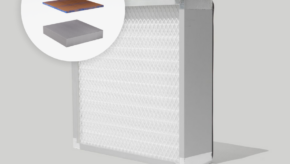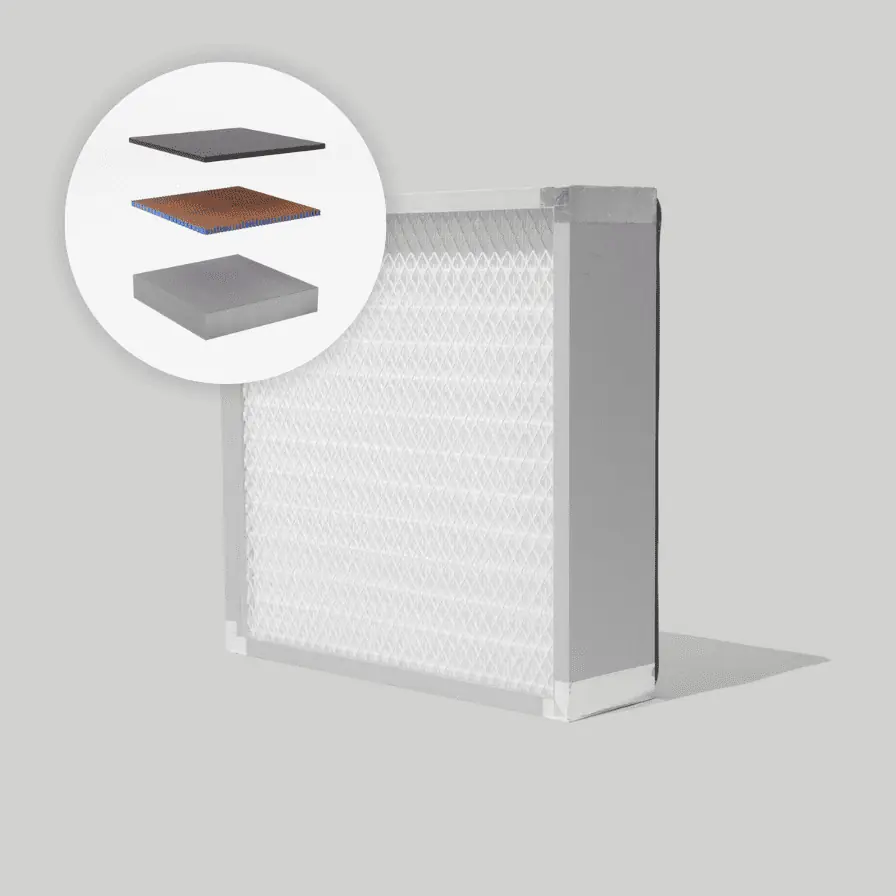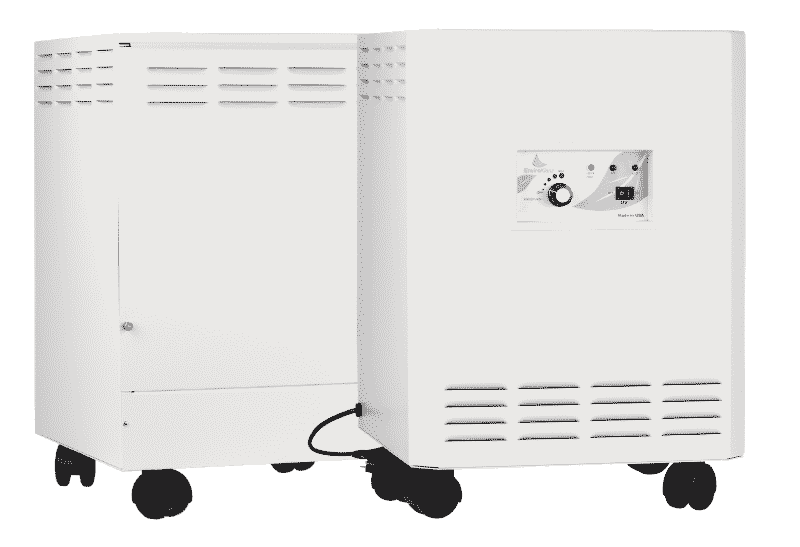The presence of mold within the environment is no surprise, as this fungal growth is a natural occurrence throughout both indoor and outdoor environments. Mold growth that develops in both indoor and outdoor environments, however, stem from different factors and functions; outdoor mold plays a part in nature by breaking down dead trees, whereas indoor mold growth does not attribute to a natural process or benefit in the space, and rather introduces a health hazards to humans exposed to this environment.
Mold is identified as a fungus that can be found in both indoor and outdoor environments, with a variety of different species in existence – ranging from tens of thousands of species to as much as three hundred thousand species or more! The introduction of mold into an indoor environment occurs in conditions that are warm, damp, and humid that elicit the growth of the fungi. As mold begins to form and grow in the indoor environment, the production of tiny microscopic mold spores will commence and spread into the air of the personal indoor area.
When mildew, mold, and eventually mold spores inhabit your home’s indoor space and air, certain issues will begin to occur throughout the environment, some that will affect the quality of your indoor air and the health of those exposed to this contaminated air.
We will look deeper into the effects of mold, mildew and other microscopic spores in your indoor air, and learn if a mold air purifier or mold filter is the best solution to mitigating these airborne contaminants.
Mildew Growth & Progression to Mold
The relationship between both mildew and mold is a close one, and a progressive relationship over time. Mildew, similar to mold, is identified as a fungus that is commonly found and present in homes and other indoor environments. Mildew is described as a non-invasive or non-troublesome type of mold that is found in wet areas and takes on a grayish-white appearance that will advance into a brown as time progresses.
Whereas mold is a more aggressive and hazardous fungus that can grow inside indoor environments and wreak havoc on the air inside this space and adversely affect the health of those exposed to these funguses. Mold is usually black, yellow, or green in color and it is extremely fuzzy or slimy in texture. Usually mold is identified not only by its colorful appearance but also by the odor that it produces into the environment, the odor is best described as a musty odor.
What Causes Mold Indoors
There are several different factors that may be present in your environment that contribute to the growth of mold indoors. The conditions in which mold needs within an environment to thrive includes the following:
- Food Source – Mold decomposes dead organic materials that can grow on wood, the paper facing on drywall, and other materials made from wood. Mold will secrete a digestive fluid that decomposes the substrate, making nutrients readily available. Mold will also be able to digest some synthetic materials such as adhesives, pastes, and paints.
- Darkness – Mold is known for growing in dark areas, but this versatile fungus is also able to grow in light environments as well. However, dark environments entice the growth of mold, and make it the ideal environment for mold to develop and grow inside.
- Oxygen – As a living and breathing organism, mold requires the presence of oxygen in the environment to survive. Any access that it has to air, even in the smallest quantity, can be enough to encourage and promote the growth of mold.
- Moisture – In order to grow and expand, mold needs moisture. If your home experiences a water leak, flood, or any exposure to water build-up, mold will be able to form and develop within the environment.
- Warmth – Warm, humid environments are the ideal conditions for mold to grow, according to mold experts. When temperatures are warm then humidity will build and create a perfect environment for mold. In fact, the humidity only needs to be higher than 55% for mold to begin to grow.
- Time – Depending on the conditions present in the environment, mold can either grow very fast or very slow. Mold will not instantly show up once a flood has occurred in your home, but it will make its presence known about 1 to 2 days after.
What is a Mold Spore & Are They Dangerous to Human Health
You may not realize it, but you’re surrounded by spores, both in your indoor environment(s) and outdoor environment. When mold is growing it will start to produce tiny structures for the purpose of reproduction, these are commonly referred to as seeds or mold spores. The unfortunate reality is that mold spores are very commonly found in most households and workplace dust.
Mold spores are significantly lightweight and nearly undetectable to the human eye, as they float in the air. These spores are so small that they typically range in size from 3 to 40 microns, which is less than half of the width of a human hair.
As mold spores drift throughout the air, they will eventually come to settle on the surfaces within the environment. When mold spores settle and the environment is ideal, the spores will begin generating thread-like cells called hyphae, which absorbs nutrients allowing mold to begin to grow.
The biggest threat posed by spores is the development of mold, which can in turn wreak havoc on the health of those exposed to the microscopic spores and mold. The spores released from mold can cause serious health problems that are well-documented in mold research. When an individual inhales mold spores it can trigger an allergic reaction and result in upper respiratory symptoms such as wheezing, coughing, and itchy, runny eyes. And for those individuals who suffer from asthma, these spores will be significantly sensitive if inhaled and will result in a potential asthmatic attack.
Do Air Purifiers Help with Mold & Mold Spores?
It is important to understand that an air purifier or filter is not a problem solver for any and all issues, especially in regard to mold. If you have mold growth inside your home or any indoor environment, the first action will be to undergo a full mold remediation within the environment. Mold remediation involves physically cleaning the mold from the air, usually with a bleach solution, from the contaminated surface in your home. There are mold remediation specialists and companies available to consumers, they provide the best method to properly remediating any mold growth on surfaces or in the air.
An air purifier, however, will help an environment where mold and mold spores are present, as it will be able to filter through and capture those hazardous spores from your air. Now, not all air purifiers contain this capability, so be sure to closely read up on each air purifier to see what exactly they are capable of doing when it comes to these spores.
Comparison: Best Air Purifier for Mold in House
There are a variety of air purifiers for mold on the market today, some using the same technology and others using a unique technology, unused by other competitors. Some of these technologies are highly effective when it comes to the removal of mold spores from the air, while others simply fall short in capturing these microscopic mold spores.
Below we are going to discuss the main air purification technologies and air filters available on the market, and how they work when it comes to mold in the air and mold spores in your home.
PECO Air Filters
Molekule, the air purifier that utilizes their patented technology called PECO (Photo Electrochemical Oxidation), claims to work at the molecular level to eliminate indoor air pollution. When it comes to mold in the air, Molekule claims that their PECO technology does not collect the mold, like HEPA technology, rather it quickly and permanently removes the mold from the air.
Although Molekule claims to be effective against VOCs, bacteria, viruses, and even mold, they fail to disclose the potential dangers of their PECO technology. When it comes to inorganic or organic molecules with halogen, sulfur, phosphorous, etc., the PECO technology is not effective. The technology will actually release chemicals and byproducts into the environment, due to the fact that Molekule works on photocatalytic principles.
Carbon Filters
Carbon filtration was designed to remove airborne chemicals, particularly VOCs (Volatile Organic Compounds), from the air. The carbon technology works by trapping the gases on an activated carbon filter, these filters are sometimes impregnated with potassium permanganate, to make the filter(s) more activated to capture a larger quantity of VOCs and odors. A carbon filter, however, is not intended for removing particles and would not be useful in removing mold spores from the environment’s air.
HEPA Filter for Mold
The traditional option for air purifier filtration is that of a HEPA filter. A HEPA filter provides the ability to filter particles from the air and can remove mold spores that have passed through the filtration. The standard for HEPA filters is based on the ability to remove 99.97% of particles from the air that are larger than 0.3 microns in size. Larger particles would become trapped by the HEPA filter, and this will include mold spores that are typically larger than 0.3 microns.
A potential issue with HEPA filters is the problem that mold will collect and gather on the HEPA filter, allowing it to potentially grow on the filters surface. Making the HEPA filter the host surface for all the mold spores that it has trapped. Therefore, if you are trying to remove mold spores and inhibit their growth using a HEPA filter or HEPA air purifier, you will need a HEPA filter that combines UVC lights to achieve a high efficiency kill of any collected mold spores. This combination provides a fierce and effective mold spore elimination from the air and your mold air purifier/filter.
Ionizing Air Purifiers
Ionizing air purifiers release an electric charge to particles, eliciting them to stick to nearby surfaces. This technology claims to remove mold spores from the environment’s air, however, the dangers presented by ionizing technology makes the benefits of the machine lack. Ionizers produce hazardous ozone into the air, and this can be significantly dangerous to the health of those exposed. The EPA (Environmental Protection Agency), warns individuals that long-term ozone exposure can cause respiratory problems even in those that are healthy. Therefore, it is best to avoid anything that emits this hazardous ozone byproduct into the air.
Ozone Generators
An ozone generator, unlike ionizing air purifiers, purposely produces ozone, rather than emitting it as a byproduct. The ozone is emitted into the air of the indoor environment and will lead to an array of health issues ranging from acute to severe.
Conclusion: Best Mold Filters
The final decision on what type of air purifiers for mold technology to use to remove mold spores from your indoor environment will depend on certain situations present in the living space. Given the information and testing of each air purification technology that safest, most effective air purification technology for mold spore elimination would be a hospital-grade HEPA filter with the combination UVC lights. This technology provides effective capture and kill of mold spores, without releasing byproducts into the air or resulting in adverse health effects of those exposed to the environment.









